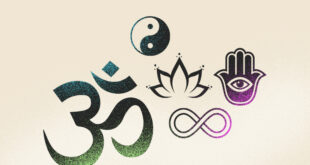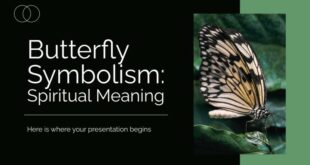Movie trailers often sound the same due to common elements like structure, music choices, and narration techniques.
How Music And Sound Effects Shape Movie Trailers
Movie trailers have a distinct way of captivating our attention and building anticipation. So, why do all movie trailers sound the same? The answer lies in the skillful use of music and sound effects. These elements play a crucial role in shaping the overall experience of a movie trailer, allowing filmmakers to set the mood and create excitement. In this blog post, let’s dissect the role of music and sound effects in movie trailers and examine their significance in captivating audiences.
Importance Of Music In Setting The Mood
The right choice of music in a movie trailer can make all the difference. It sets the mood, evokes emotions, and helps the audience connect with the story. Whether it’s a haunting melody, an energetic beat, or a subtle orchestral arrangement, music has the power to enhance the visual elements and immerse viewers in the trailer’s narrative.
Furthermore, music in movie trailers needs to be carefully selected to align with the genre and theme of the film. For instance, an action-packed trailer may feature adrenaline-pumping music with powerful drum beats, while a romantic comedy trailer might opt for a more lighthearted and whimsical tune. The choice of music becomes an identity for the film and plays a significant role in shaping the audience’s expectations.
Creating Anticipation With Sound Effects
In addition to music, sound effects play a crucial role in shaping the intensity and excitement of a movie trailer. These effects, when used strategically, can create a sense of anticipation and intrigue among the audience. From echoing footsteps to thunderous explosions, sound effects heighten the impact of visuals and help build suspense.
An effective movie trailer utilizes sound effects to enhance specific moments, emphasizing key plot points or showcasing the film’s unique elements. For example, a horror film trailer may employ eerie whispers, spine-chilling screams, or sudden bursts of silence to unnerve the audience. On the other hand, an adventure film trailer could utilize sounds of soaring winds, crackling fire, or clashing swords to amplify the sense of excitement and danger.
By carefully integrating music and sound effects, movie trailers create a captivating audiovisual experience that boosts anticipation and leaves a lasting impression. These elements work hand in hand to build tension, establish the film’s tone, and showcase its unique qualities, ultimately enticing the audience to watch the full movie.
Psychological Factors Influencing Movie Trailer Sounds
Psychological factors greatly impact the sounds of movie trailers, contributing to their similar nature. These factors influence audience emotions, creating a formulaic approach that aims to evoke excitement and anticipation.
The Power Of Familiarity And Audience Expectations
One of the main reasons why movie trailers sound the same lies in the psychological factors that influence our perception of them. Firstly, the power of familiarity plays a significant role in shaping the sounds we hear in movie trailers. When audiences are exposed to similar audio elements repeatedly, they start to associate those sounds with the movie-going experience. This familiarity helps create a sense of comfort and anticipation, as viewers know what to expect when they hear certain types of sounds in a trailer.
For example, the booming sound of a deep voice narrating the storyline or the intense orchestral music building up to a climactic moment are elements that have become deeply ingrained in the minds of moviegoers. These familiar sounds act as audio cues, signaling that something exciting and thrilling is about to happen on the screen. Audiences have come to expect these auditory cues and often find them reassuring, enhancing their enjoyment of the movie trailer.
Emotionally Captivating Audio Techniques
In addition to familiarity, movie trailers also utilize emotionally captivating audio techniques to capture the attention of audiences. These techniques are carefully crafted to evoke specific emotional responses and engage viewers on a deeper level. By tapping into our primal instincts and emotions, movie trailers can influence our perception of the film and create a strong desire to watch it.
One of the most commonly used audio techniques is the use of crescendos and tension-building music. By gradually increasing the volume and intensity of the background music, trailers create a sense of anticipation and amplify the emotional impact of the visuals. This technique is often accompanied by quick cuts and fast-paced editing, further adding to the intensity and leaving audiences craving for more.
Another audio technique that movie trailers employ is the strategic use of sound effects. Whether it’s the sound of glass shattering, a car screeching, or a door slamming shut, these effects are meticulously chosen to enhance the visual impact of key moments in the trailer. By aligning the sound effects with the visuals, trailers create a more immersive experience, making it easier for audiences to connect with the story and characters.
Moreover, voiceovers play a crucial role in setting the tone and mood of a movie trailer. The deep, booming voice often used in trailers exudes authority and adds a sense of grandeur to the narration. It can effortlessly convey suspense, excitement, or a feeling of awe, amplifying the emotional impact of the visuals and compelling viewers to want to learn more about the film.
Overall, through the power of familiarity and emotionally captivating audio techniques, movie trailers have mastered the art of capturing our attention and generating excitement. By understanding the psychological factors that influence our perception of sounds, filmmakers and marketing teams can create memorable, engaging trailers that leave a lasting impression on audiences.
Sound Design Trends In Movie Trailers
When it comes to movie trailers, there is no denying that sound design plays a crucial role in setting the tone and building anticipation. Over the years, certain trends have emerged in the world of movie trailer sound design, creating a sense of familiarity among audiences. In this section, we will explore some of the prominent sound design trends in movie trailers, including the rise of epic orchestral scores, the impact of electronic music and synthesizers, and the use of repeating patterns and rhythmic cues.
The Rise Of Epic Orchestral Scores
One of the most prevalent sound design trends in movie trailers is the use of epic orchestral scores. These grandiose compositions, often featuring a full symphony orchestra, create a sense of awe and grandeur. The soaring strings, triumphant brass, and thunderous percussion help to elevate the emotional impact of the trailer, immersing the audience in the world of the film.
With powerful and melodic themes, these scores have become synonymous with epic and blockbuster films, instantly recognizable to moviegoers. The intense and dramatic nature of this sound design choice taps into our primal instincts, eliciting excitement and anticipation for the story that is about to unfold on the big screen.
Impact Of Electronic Music And Synthesizers
In addition to orchestral scores, another sound design trend that has made its mark on movie trailers is the incorporation of electronic music and synthesizers. This modern twist on sound design adds a sense of energy, innovation, and futurism to the trailer.
Electronic music and synthesizers allow for the creation of unique sounds and textures that cannot be achieved with traditional instruments alone. These bold and experimental sound choices often align with sci-fi, action, and thriller genres, enhancing the atmosphere and contributing to the overall cinematic experience.
Repeating Patterns And Rhythmic Cues
Another characteristic of movie trailer sound design is the use of repeating patterns and rhythmic cues. These elements provide a sense of structure, drive, and momentum to the trailer, keeping the audience engaged and hooked throughout.
Repeating patterns, such as pulsating basslines or rhythmic string ostinatos, create a sense of anticipation and build tension within the trailer. These recognizable patterns become sonic motifs that resonate with the viewer, guiding them through the various peaks and valleys of the trailer’s narrative.
Rhythmic cues, on the other hand, help to synchronize the visuals and sounds, enhancing the impact of specific moments in the trailer. Whether it’s the rhythmic sound of footsteps, gunshots, or explosions, these cues serve as auditory reminders of the action and excitement that awaits in the full film.
In conclusion, the sound design trends in movie trailers have evolved to capture the attention and imagination of audiences. The rise of epic orchestral scores, the impact of electronic music and synthesizers, and the use of repeating patterns and rhythmic cues have become hallmarks of the industry. These trends not only create a cohesive and engaging audiovisual experience but also contribute to the overall branding and recognition of a film. So, the next time you watch a movie trailer, pay attention to the sound design choices and see if you can spot these trends in action!
The Role Of Sound Mixing And Editing In Creating Similarities
When watching movie trailers, have you ever noticed how they all seem to sound the same? The music swells, the dialogue fades in and out, and the sound effects punctuate the action. It’s no coincidence that these trailers have a familiar and compelling sound. The role of sound mixing and editing in creating similarities cannot be underestimated.
Balancing Dialogue, Music, And Effects For Maximum Impact
One of the key tasks of sound mixing and editing is balancing the various elements – dialogue, music, and effects – to create maximum impact. Each element plays a crucial role in shaping the overall sound of the trailer, and finding the right balance is essential.
| Dialogue | Music | Effects |
|---|---|---|
| Dialogue serves as the backbone of the trailer, conveying information, setting the tone, and introducing characters and conflicts. It needs to be clear, crisp, and well-timed to capture the viewer’s attention. | Music sets the mood and evokes emotions. It can build anticipation, create tension, or provide a sense of excitement. The choice of music is crucial, as it needs to complement the visuals and enhance the overall storytelling. | Effects add impact and realism to the trailer. They can range from explosions and gunfire to footsteps and door creaks. These sounds help to immerse the viewer in the world of the film and make the action feel more immediate and thrilling. |
Enhancing Tension And Suspense Through Audio Techniques
Creating tension and suspense is a common goal in movie trailers, and sound plays a significant role in achieving this. Audio techniques are employed to enhance the emotional impact of the visuals and engage the viewer’s senses.
- Sound Design: Sound designers use a variety of techniques, such as creating atmospheric ambiences, layering sounds, and manipulating frequencies, to build tension and suspense. By carefully selecting and manipulating sounds, they can heighten the emotional impact of key moments in the trailer.
- Tempo and Rhythm: The tempo and rhythm of the music and sound effects can greatly influence the pacing and intensity of a trailer. Slow, moody music may build anticipation, while fast-paced beats can create a sense of urgency and excitement.
- Silences and Pauses: Just as music and sound effects can enhance tension, strategic silences and pauses can also be powerful tools. By momentarily removing sound, the trailer creates a sense of anticipation and leaves room for the viewer’s imagination to fill in the gaps.
Overall, sound mixing and editing are crucial in creating similarities among movie trailers. The careful balance of dialogue, music, and effects, along with the use of audio techniques, allows trailers to captivate audiences and build anticipation for the films. So, the next time you find yourself engrossed in a movie trailer, take a moment to appreciate the intricate work that went into creating its compelling sound.
Influencers And Innovators In Movie Trailer Sound Design
When it comes to movie trailers, there is one aspect that often goes unnoticed but plays a crucial role in captivating the audience: sound design. From the ominous thumping bass to the climactic orchestral scores, movie trailers use sound to elicit emotions and create anticipation. But have you ever wondered why so many movie trailers sound the same?
The Impact Of Hans Zimmer And Other Influential Composers
Hans Zimmer, the mastermind behind the unforgettable soundtracks of films like Inception and The Dark Knight, has had a profound impact on the world of movie trailer sound design. His innovative approach to blending traditional orchestral music with electronic elements has become a staple in the industry. Zimmer’s bold and epic compositions have influenced a generation of composers and shaped the sound of movie trailers as we know it today.
But Zimmer is not the only influential figure in movie trailer sound design. There are several other composers who have left their mark on the industry. For example, John Williams, known for his iconic scores in films like Star Wars and Jurassic Park, has set the standard for epic and memorable soundtracks. His compositions have been widely used in movie trailers, often invoking a sense of awe and adventure.
Beyond composers, sound designers and editors also play a crucial role in shaping the sound of movie trailers. Their expertise lies in finding the perfect balance between dialogue, music, and sound effects. By manipulating the audio elements, they can create tension, build excitement, and give the trailer its unique sonic identity.
Evolution Of Sound Design In Blockbuster Movie Trailers
Over the years, movie trailer sound design has undergone a significant evolution. It has shifted from simple voiceovers and background music to complex and highly orchestrated soundscapes. With advancements in technology and access to a vast array of sounds, movie trailer sound designers now have more tools at their disposal than ever before.
The rise of digital audio workstations (DAWs) has revolutionized the way sound designers create and manipulate sounds. These powerful software platforms allow for precise control over every aspect of the audio, enabling them to craft intricate and immersive soundscapes that enhance the overall viewing experience.
Additionally, the introduction of new sound effects libraries has also contributed to the evolution of movie trailer sound design. These libraries provide a vast collection of pre-recorded sounds, ranging from explosions to animal noises, making it easier for sound designers to find the perfect sound for each moment in the trailer.
Moreover, the use of innovative sound techniques, such as sound design layering and spatial audio, has added a new dimension to movie trailer sound design. Layering different sounds together creates a rich and dynamic sonic landscape, while spatial audio techniques immerse the audience in a three-dimensional audio environment, further intensifying the viewing experience.
In conclusion, the world of movie trailer sound design is constantly evolving, influenced by the creativity and innovation of composers, sound designers, and editors. As technology advances and new techniques emerge, we can expect even more captivating and unforgettable soundscapes in future movie trailers.
Frequently Asked Questions Of Why Do All Movie Trailers Sound The Same?
Why Do Movie Trailers Use Similar Music?
Movie trailers use similar music because it creates a sense of familiarity and builds anticipation among viewers. The music sets the tone and enhances the emotional impact of the trailer, helping to create excitement and draw the audience into the film’s world.
What Makes Movie Trailers Have A Similar Structure?
Movie trailers follow a similar structure because it is an effective storytelling method. By introducing the main characters, showcasing key scenes, and building momentum towards a climax, trailers generate excitement and intrigue, enticing viewers to watch the full movie.
Why Do Movie Trailers Often Show The Best Parts Of The Film?
Movie trailers show the best parts of the film to attract audiences. By highlighting the most thrilling, amusing, or visually stunning moments, trailers generate buzz and create a desire to experience the full movie. However, it’s important to strike a balance and not give away too much, so viewers are still surprised and entertained when watching.
How Do Movie Trailers Impact Audience Expectations?
Movie trailers shape audience expectations by setting a certain tone, highlighting specific aspects, and creating anticipation. They influence viewers’ perceptions of the film and can affect their decision to watch it. A well-crafted trailer can build excitement and curiosity, while a misleading or poorly executed one may lead to disappointment or disinterest.
Conclusion
The similarity in sound among movie trailers can be attributed to a combination of factors, including audience expectations, industry conventions, and effective marketing strategies. Sound designers harness the power of familiar sounds and techniques to captivate viewers and build anticipation.
While this may result in a certain level of sameness, it also ensures that trailers effectively communicate the essence of the film, generating excitement and driving ticket sales. Ultimately, the formulaic nature of movie trailer sound is a testament to the craft of storytelling and the power of audio to evoke emotions.
 Samoyik Your Entertainment Partner
Samoyik Your Entertainment Partner




